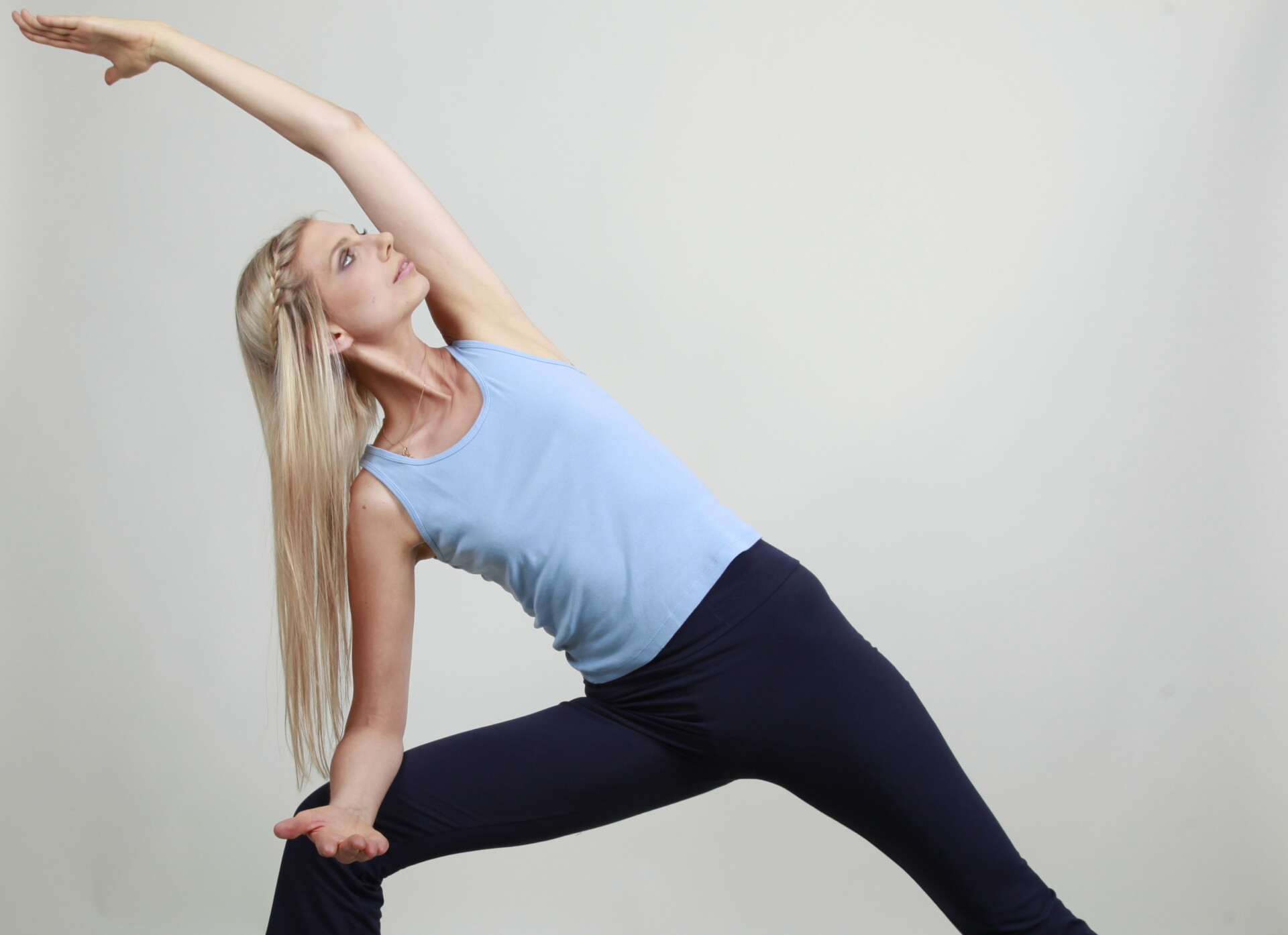Do you want to start a daily yoga practice and don’t know where to begin? Or maybe you have one already and you are looking for some new inspiration? If you want to practice yoga in the morning upon rising or in the late afternoon at home, here are a few suggestions for you of how to build an enjoyable, varied practice.
1. Basic practice

Beginning of the sun salutations from Orit Sen Gupta’s book “Yoga for beginners”
What to practice
Sit in silence and use a timer. Do breathing exercises (pranayama) and then lie down and relax for a couple of breaths. If you are a beginner with pranayama start with breathing a few times without controlling your breath and just enjoying it. Then exhale 5 times longer than you inhale.
Slowly get up, do some shoulder rolls and then 5-10 minutes of sun salutations. You could do 5*2 rounds of classical sun salutations (both sides) or 3 Surya Namaskar A and 3 Surya Namaskar B.
Next come some delicious twists, either as standing poses or passively on your back on the mat. Add the plough (Halasana) and shoulder stand (Sarvangasana) for inversions and finish with relaxation pose (Shavasana) for 5-10 minutes.
Benefits
With this schedule you receive the benefits of meditation and pranayama in the morning. You move your spine in all directions and add some inversions, too. Final relaxation pose always completes your yoga practice. This integrates what your body learned during practice and calms down your whole system.
2. Schedule by weekday

Downward facing dog and hand balance from Orit Sen Gupta’s “Yoga for beginners” book
What to practice
It is fun to have a specific schedule per week-day. The following sequence and ideas are taken from the practice manual “Yoga for Beginners” in German from Orit Sen Gupta and from the workshops I attended with her teaching. I highly recommend all her books. She has beautiful pictures in her scripts and you can order them directly at her yoga school’s website in Tel Aviv.
In the book the times for the practices add up to an hour per day. You can keep the following framework and shorten the times, so that your practice comes to 20-30 minutes each morning.
The schedule with yoga postures (asanas) goes from Sunday to Friday. On Saturday you only sit, do pranayama (breathing exercises) and go into relaxation pose. Alternatively you can rest on Saturday with a 20 minutes long Shavasana.
| Practice | Description |
| Sitting | 10 minutes |
| Pranayama | 15 minutes |
| Asanas | Surya Namaskar – 5 minutes (not on Saturday)
Shirshasana or preparation for headstand – 5 minutes (not on Saturday) Different asana groups per week-day:
Halasana and Sarvangasana – 5 to 10 minutes (not on Saturday) |
| Relaxation | Shavasana – 10 minutes |
The list only states the names of the practices. Many of you probably already do yoga and can apply what you already know. For those of you, who just started to go to yoga classes the plan also gives you a framework to start with simple poses at home or get Orit’s book. If you want me to help you to put your own individualized home practice together in a private session, I will be happy to help you.
Benefits

Handstand preparation from Orit Sen Gupta’s “Yoga for beginners” book
You will highly benefit from practicing this way:
- You do not have to think about what to practice, you have a plan for every week-day. This makes it much easier to get onto your mat in the first place. You will never regret having done the practice, even if your mind wants to tell you to skip it. With a plan you simply start practicing.
- You practice each day on another part of the body, while incorporating meditation and breathing work. People who practice at home often only do their favorite yoga poses instead of balancing the whole body in the course of one week.
- With each asana group per day you receive another feeling for the energy of the day. For example, Sunday is a very powerful and peaceful day usually, which fits well with the standing poses.
- It’s fun to have some freedom and play built into the plan. On Fridays you are free to choose asanas from all yoga posture groups.
- I love the fact that the plan has a day off. Yoga is about keeping your balance and having “only” the long Shavasana on Saturday (you can make it 20 minutes) might be quite challenging for some people, too.
Yogic attitude
When you practice you will have thoughts and feelings come up. Do not worry about having thoughts while doing yoga. It is the mind’s function to think and during practice you will probably become more aware of your feelings. Just love whatever arises.
By loving your thoughts and emotions as they arise you practice loving unconditionally and experience a feeling of inner peace even if your mind would rather tell you, that it is not ok to have these specific thoughts and feelings. You are so much more than your body, emotions and thoughts. Your daily practice can show you this and prepare you for the day ahead.
